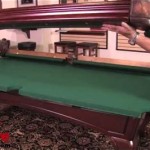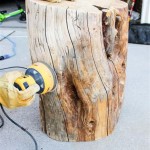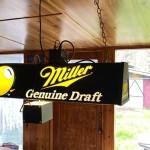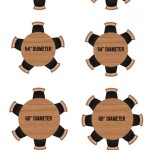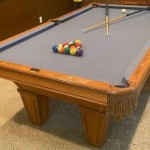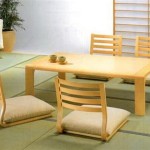```html
Unlocking Timeless Charm: A Comprehensive Guide to Vintage Iron Table Bases
Vintage iron table bases represent a captivating blend of durability, aesthetic character, and historical significance. These bases, often salvaged from antique furniture or meticulously crafted in a bygone era, offer a unique opportunity to infuse a space with a sense of enduring style. They transcend fleeting trends, grounding design schemes with a sense of solidity and visual interest often lacking in modern, mass-produced alternatives. This article delves into the nuances of vintage iron table bases, exploring their historical context, identifying key design features, and providing practical considerations for acquisition and integration into contemporary settings.
Historical Context and Evolution of Iron Table Bases
The incorporation of iron into furniture design gained prominence during the Industrial Revolution. Advancements in metalworking techniques facilitated the mass production of iron components, making them a viable and increasingly attractive alternative to traditional wood. Cast iron, in particular, became a favored material due to its strength, versatility, and ability to be molded into intricate shapes. Early iron table bases often mirrored the stylistic influences of the Victorian era, characterized by ornate scrollwork, elaborate castings, and a general emphasis on decorative embellishment. These bases were frequently paired with marble or wooden tabletops, gracing parlors, dining rooms, and commercial establishments alike.
As the 20th century progressed, iron table base designs evolved to reflect changing aesthetic preferences. The Art Nouveau period introduced flowing, organic forms, while the Art Deco movement embraced streamlined silhouettes and geometric patterns. During the mid-century modern era, iron table bases became more minimalist, often featuring simple, angular designs that complemented the clean lines of the period's furniture. The use of wrought iron also gained traction, offering a more handcrafted and rustic aesthetic. Understanding the historical context helps identify the provenance of specific bases and appreciate their unique stylistic nuances.
The durability of iron ensured that many of these bases survived the passage of time. Today, they are highly sought after by collectors, designers, and homeowners looking to add a touch of historical authenticity and unique character to their spaces. The appeal lies not only in their aesthetic qualities but also in the inherent sustainability of repurposing vintage items, offering an environmentally conscious alternative to purchasing new furniture.
Identifying Key Design Features and Styles
Vintage iron table bases exhibit a wide range of design features and styles, reflecting the diverse aesthetic trends of different historical periods. Recognizing these characteristics is crucial for identifying the origin and potential value of a particular base. Several key stylistic categories can be identified:
Victorian Iron Bases: These bases are typically characterized by intricate cast iron details, including scrollwork, floral motifs, and elaborate castings. They often feature claw feet or other decorative elements that add to their ornate appearance. Victorian iron bases are frequently heavier and more substantial than later designs.
Art Nouveau Iron Bases: Inspired by nature, Art Nouveau iron bases feature flowing, organic lines and asymmetrical forms. Common motifs include plant life, insects, and stylized female figures. These bases often have a lighter and more delicate appearance than Victorian designs.
Art Deco Iron Bases: Embracing geometric shapes and streamlined silhouettes, Art Deco iron bases reflect the modern sensibilities of the 1920s and 1930s. They often feature stepped designs, angular patterns, and a sense of sleek sophistication. Chrome plating was also a common finish during this period.
Mid-Century Modern Iron Bases: These bases are typically minimalist in design, featuring clean lines, simple geometric shapes, and a lack of ornamentation. They are often made of wrought iron or steel tubing and finished with a matte black or painted finish. Mid-century modern iron bases are designed to be functional and unobtrusive, allowing the tabletop to take center stage.
Wrought Iron Bases: Wrought iron is a type of iron that has been heated and shaped by hand, resulting in a more textured and rustic appearance. Wrought iron table bases often feature hand-forged details, such as hammered surfaces, twisted elements, and decorative scrolls. These bases are particularly well-suited for creating a warm and inviting atmosphere.
Beyond these broad categories, numerous sub-styles and variations exist. Examining the specific details of a base, such as the type of iron used, the construction techniques employed, and the presence of any identifying marks, can provide valuable clues about its origin and age. Consulting with antique dealers or furniture historians can also be helpful in identifying and authenticating vintage iron table bases.
The materials used also vary. Cast iron is heavier and capable of more intricate detail, while wrought iron offers a more handcrafted feel. Steel tubing, often seamless, became popular in the mid-20th century due to its strength and ease of manipulation. Each material contributes a distinct aesthetic and structural quality to the base.
Practical Considerations for Acquisition and Integration
Acquiring and integrating a vintage iron table base into a contemporary setting requires careful consideration of several practical factors. These considerations range from sourcing the base to ensuring its structural integrity and suitability for the intended use.
Sourcing Vintage Iron Table Bases: Potential sources include antique stores, flea markets, estate sales, online auctions, and architectural salvage yards. When sourcing a base, it is essential to carefully examine its condition, looking for signs of rust, cracks, or other damage. Be prepared to negotiate the price and inquire about the base's history and provenance.
Assessing Structural Integrity: Before purchasing a vintage iron table base, thoroughly assess its structural integrity. Check for any signs of rust, corrosion, or cracks in the metal. Ensure that the base is stable and does not wobble or rock. If necessary, consult with a metalworker or furniture restorer to determine the extent of any damage and the feasibility of repairs.
Determining Size and Compatibility: Consider the size and shape of the tabletop you intend to use with the base. Ensure that the base is appropriately sized to support the tabletop and that the two components are aesthetically compatible. Pay attention to the height of the base and the overall dimensions of the finished table. It is also important to consider the existing decor of the space where the table will be placed. Choose a base that complements the existing style and color palette.
Restoration and Refinishing: Depending on its condition, a vintage iron table base may require restoration or refinishing. This may involve removing rust, repairing cracks or damage, and applying a new coat of paint or sealant. Consider consulting with a professional furniture restorer to ensure that the restoration is done properly and that the base's historical value is preserved. The decision to refinish depends on the desired aesthetic. Leaving the original patina can highlight the base's age and history, while refinishing can provide a cleaner, more modern look.
Choosing a Tabletop: Selecting the right tabletop to pair with a vintage iron base is crucial for achieving a cohesive and aesthetically pleasing look. Options include wood, glass, stone, or metal. Consider the style of the base and the overall design of the space when making your selection. A rustic wooden tabletop can complement a wrought iron base, while a sleek glass tabletop can enhance the modern look of an Art Deco base.
Integration into Contemporary Settings: Vintage iron table bases can be seamlessly integrated into a wide range of contemporary settings, from modern apartments to traditional homes. They can be used as dining tables, coffee tables, side tables, or even console tables. The key is to choose a base that complements the existing decor and adds a touch of character and sophistication to the space. Consider using vintage iron table bases as unexpected elements in unexpected places. For example, a small wrought iron base could be used to support a plant stand or a display case.
Maintenance and Care: Once a vintage iron table base has been acquired and integrated into a setting, proper maintenance and care are essential to preserving its beauty and longevity. Regularly dust the base and wipe it down with a damp cloth. Avoid using harsh chemicals or abrasive cleaners, as these can damage the finish. If the base is exposed to moisture, dry it thoroughly to prevent rust. Apply a protective sealant periodically to help prevent corrosion.
By carefully considering these practical factors, individuals can successfully acquire and integrate vintage iron table bases into their homes, offices, or other spaces, adding a touch of timeless charm and historical significance to their surroundings.
```
Decorative Cast Iron Table Bases B8c4

Vintage Machine Age Industrial Adjustable Cast Iron Table Base Legs 18 26 Nr 400 Wrought

Vintage Heavy Cast Iron French Rococo Style Ornate Dining Pedestal Table Base For At 1stdibs Antique

Vintage Sculptured Table Base

28 Dining Table Desk Height Industrial Cast Iron Legs Base Los Angeles

Vintage Industrial Ductile Cast Iron Table Base Set Of 2 Knox Deco

Louisiana Brass Cafe Table Stand Restaurant Bistro Bases

Cast Iron Dining Table Legs Vintage Base

B1c5 Ornamental Line Cast Iron Table Base Peter Meier Inc

Round Wrought Iron Table Base 1stdibs Com Furniture

